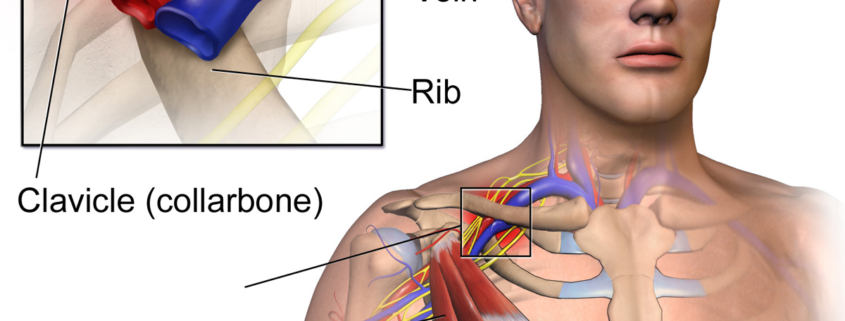Thoracic Outlet Syndrome

Overview of Thoracic Outlet Syndrome
Thoracic Outlet Syndrome (TOS) is a relatively uncommon condition characterized by pain, numbness, or weakness in the shoulder and arm. This disorder arises from compression, injury, or irritation of the nerves and/or blood vessels in the thoracic outlet—a narrow passage beneath the collarbone and consisting of the first rib, neck muscles, and upper chest. It tends to be associated with repetitive injury, trauma, or abnormal physical characteristics. An understanding of TOS is essential for managing it effectively.
Types of Thoracic Outlet Syndrome
TOS is generally classified into three main types, each linked to distinct causes and symptoms:
1. Neurogenic (neurological) TOS: The most prevalent form, it mainly affects the brachial plexus—a network of nerves leading from the spinal cord to the arm and hand.
2. Vascular TOS: This type involves the veins or arteries beneath the collarbone.
3. Nonspecific-type TOS: Also known as disputed TOS, this type is controversial because it lacks clear diagnostic criteria while presenting a likewise diverse range of symptoms.
Causes of Thoracic Outlet Syndrome
Typically, TOS results from excess pressure on the nerves or blood vessels in the thoracic outlet. Causes may encompass:
-
- Physical trauma from a car accident
-
- Repetitive injuries from job- or sports-related activities
-
- Anatomical defects such as an abnormal first rib or an extra rib
-
- Pregnancy that can loosen joints and put pressure on nerves
Aside from these, poor posture that drops the shoulders or keeps the head forward can also contribute to nerve compression.
Symptoms of Thoracic Outlet Syndrome
Signs and symptoms of TOS vary based on which structures (nerves, arteries, or veins) are affected. Common symptoms include:
-
- Neck, shoulder, and arm pain
-
- Numbness or tingling sensations in fingers
-
- Weakened grip
Depending upon the type of TOS, one may also experience additional symptoms like discolored hands or a lump in the lower neck region.
Diagnosis of Thoracic Outlet Syndrome
Diagnosing TOS can be challenging due to its similarity with other conditions. A detailed medical history and physical examination often provide initial diagnostic clues. Diagnostic tests may include:
-
- X-rays: Clear images of the chest and neck help identify anatomical anomalies.
-
- Ultrasound: Evaluates blood flow when the arm is in various positions.
-
- Magnetic Resonance Imaging (MRI): Offers a detailed view of body structures.
-
- Nerve Conduction Studies: Assesses for nerve damage.
Treatment Options for Thoracic Outlet Syndrome
Treatments for TOS usually aim at relieving the symptoms and improving function. They may include:
-
- Physical therapy to strengthen muscles and open the thoracic outlet
-
- Medication for pain and inflammation control
-
- Surgical intervention, in severe cases, to decompress the thoracic outlet
Living With Thoracic Outlet Syndrome
Daily management strategies for living with TOS are essential, including:
-
- Engaging in regular physical activity to keep muscles strong and flexible.
-
- Maintaining good posture to lessen pressure on the nerves and blood vessels.
-
- Implementing frequent breaks at work to minimize repetitive movement injuries.
-
- Adhering to medication schedules and therapy regimens for best results.
When to Seek Help
Seek immediate medical attention if you experience sudden onset of swelling, bluish color, or constant pain in your arm or hand, severe pain, or muscle weakness. These may be signs of a blood clot or severe compression, which can have serious health consequences. Understanding TOS and seeking timely help can significantly impact treatment outcomes and improve the quality of life for those affected.
